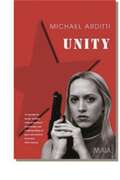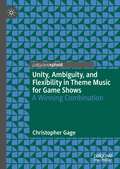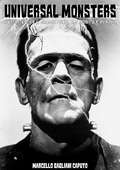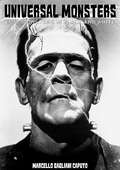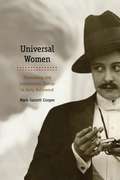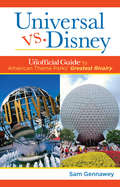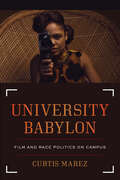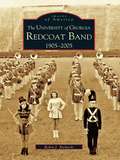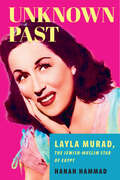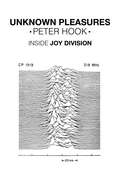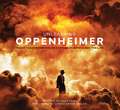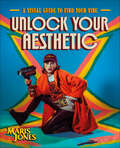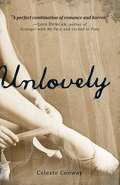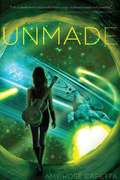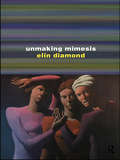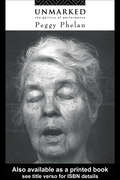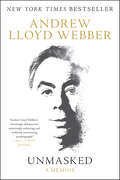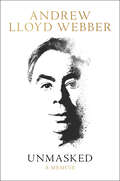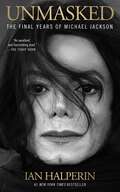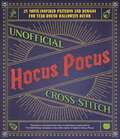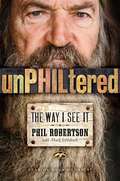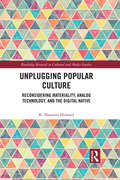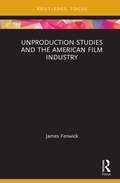- Table View
- List View
Unity
by Michael ArdittiThe story of a lost film about the relationship between Adolf Hitler and the English aristocrat Unity Mitford'A wonderful novel, written with exceptional knowledge and understanding of past and present Germany' Gitta Sereny'The most intriguing and thought-provoking novel I have read this year' Daily Express 'A remarkable, unsettling book' The Times'A gripping read packed with intrigue, sex, politics and death. What more could you possibly want?' AttitudeUnity tells the story of a lost film about the relationship between the English aristocrat, Unity Mitford, and Hitler, set against the background of the Red Army Faction terror campaign in 1970s Germany. Shooting has to be abandoned when the leading actress, Felicity Benthall, joins in the campaign, following her affair with a charismatic Palestinian. The author himself features in the narrative when, almost thirty years later, he attempts to uncover the truth about Felicity and another university friend, Luke Dent, who wrote the film-script. He consults Luke's letters from the set and the diaries of the former Hollywood child star and revolutionary socialist, Geraldine Mortimer, who played Diana Mosley; interviews two of the German actors and the film's producer, Thomas Bücher, an Auschwitz survivor turned high-powered pornographer; reads a revealing memoir by the director's widow; and corresponds with Carole Medhurst, a British actress turned Hollywood mogul. Their testimonies set up an intricate chain of associations from 1930s Britain to post-war Germany, painting a disturbing picture of corruption and fanaticism, and casting light on the nature of evil.
Unity
by Michael ArdittiThe story of a lost film about the relationship between Adolf Hitler and the English aristocrat Unity Mitford'A wonderful novel, written with exceptional knowledge and understanding of past and present Germany' Gitta Sereny'The most intriguing and thought-provoking novel I have read this year' Daily Express 'A remarkable, unsettling book' The Times'A gripping read packed with intrigue, sex, politics and death. What more could you possibly want?' AttitudeUnity tells the story of a lost film about the relationship between the English aristocrat, Unity Mitford, and Hitler, set against the background of the Red Army Faction terror campaign in 1970s Germany. Shooting has to be abandoned when the leading actress, Felicity Benthall, joins in the campaign, following her affair with a charismatic Palestinian. The author himself features in the narrative when, almost thirty years later, he attempts to uncover the truth about Felicity and another university friend, Luke Dent, who wrote the film-script. He consults Luke's letters from the set and the diaries of the former Hollywood child star and revolutionary socialist, Geraldine Mortimer, who played Diana Mosley; interviews two of the German actors and the film's producer, Thomas Bücher, an Auschwitz survivor turned high-powered pornographer; reads a revealing memoir by the director's widow; and corresponds with Carole Medhurst, a British actress turned Hollywood mogul. Their testimonies set up an intricate chain of associations from 1930s Britain to post-war Germany, painting a disturbing picture of corruption and fanaticism, and casting light on the nature of evil.
Unity, Ambiguity, and Flexibility in Theme Music for Game Shows: A Winning Combination
by Christopher GageWith flashing lights, bright colors, and big money, game shows have been an integral part of American culture since the days of radio. While the music that accompanies game shows is charming and catchy, it presents two unique, opposing challenges: first, it must exhibit unity in its construction so that, at any point and for any length of time, it is a tuneful, recognizable signifier of the show to which it belongs; at the same time, it must also possess the ability to be started and stopped according to the needs of gameplay without seeming truncated. This book argues that game show music, in particular from 1960 to 1990, deploys a variety of shared techniques in order to manage these two goals, including theme-derived vamps; saturation of motivic material; and harmonic, rhythmic, and formal ambiguity. Together, these techniques make game show themes exciting, memorable, and perfectly suited to their role.
Universal Monsters L’Épopée des monstres en noir et blanc
by Marcello Gagliani Caputo Héloïse ChapputL'histoire des monstres qui ont donné vie au cinéma d'épouvante De la première adaptation du roman Le Fantôme de l'Opéra aux inoubliables Dracula de Tod Browning et Frankenstein de James Whale, Universal a écrit l'histoire mondiale du cinéma d'épouvante en immortalisant des personnages qui inspirent aujourd'hui encore de nombreux cinéastes. Complété d'une filmographie et préfacé par Nicola Lombardi (I ragni zingari, Madre Nera), l'essai représente un point de repère pour tous les curieux et passionnés de l'une des meilleures périodes du cinéma d'épouvante mondial.
Universal Monsters: Epic Monsters in Black and White
by E. S. Dempsey Marcello Gagliani CaputoAnybody who loves scary movies will love this tribute to horror in film. From Phantom of the Opera in 1925 to the 1950s creature features, Hollywood's Universal Studios delivered fantastic films with timeless icons known worldwide: Dracula, Frankenstein, the Mummy, the Wolf Man, the Invisible Man, and the Creature from the Black Lagoon. This book looks at the performances of the stars who breathed life into the monsters -- Lon Chaney, Bela Lugosi, Boris Karloff, Lon Chaney Jr, Claude Rains, Vincent Price, and others -- while also remembering the excellent supporting players and, of course, the geniuses behind the camera who made these films both horrific and beautiful. A must for classic film lovers.
Universal Women: Filmmaking and Institutional Change in Early Hollywood
by Mark Garrett CooperBetween 1912 and 1919, the Universal Film Manufacturing Company credited eleven women with directing at least 170 films, but by the mid-1920s all of these directors had left Universal and only one still worked in the film industry at all. Two generations of cinema historians have either overlooked or been stymied by the mystery of why Universal first systematically supported and promoted women directors and then abruptly reversed that policy. In this trailblazing study, Mark Garrett Cooper approaches the phenomenon as a case study in how corporate movie studios interpret and act on institutional culture in deciding what it means to work as a man or woman. In focusing on issues of institutional change, Cooper challenges interpretations that explain women's exile from the film industry as the inevitable result of a transhistorical sexism or as an effect of a broadly cultural revision of gendered work roles. Drawing on a range of historical and sociological approaches to studying corporate institutions, Cooper examines the relationship between institutional organization and aesthetic conventions during the formative years when women filmmakers such as Ruth Ann Baldwin, Cleo Madison, Ruth Stonehouse, Elise Jane Wilson, and Ida May Park directed films for Universal.
Universal versus Disney: The Unofficial Guide to American Theme Parks' Greatest Rivalry
by Sam GennaweyUniversal Studios never really wanted to get into the theme park business. They wanted to be the anti-Disney. But when forced to do so, they did it in a big way. Despite the fits and starts of multiple owners, the parks have finally gained the momentum to mount a serious challenge to the Walt Disney Company. How did this happen? Who made it happen? What does this mean for the theme park industry? In Universal Versus Disney, his newest work to investigate the histories of America's favorite theme parks, seasoned Disney-author Sam Gennawey has thoroughly researched how Universal Studios shook up the multi-billion dollar theme park industry, one so long dominated by Walt Disney and his legacy.
University Babylon: Film and Race Politics on Campus (American Crossroads #57)
by Curtis MarezFrom the silent era to the present, film productions have shaped the way the public views campus life. Collaborations between universities and Hollywood entities have disseminated influential ideas of race, gender, class, and sexual difference. Even more directly, Hollywood has drawn writers, actors, and other talent from ranks of professors and students while also promoting the industry in classrooms, curricula, and film studies programs. In addition to founding film schools, university administrators have offered campuses as filming locations. In University Babylon, Curtis Marez argues that cinema has been central to the uneven incorporation and exclusion of different kinds of students, professors, and knowledge. Working together, Marez argues, film and educational institutions have produced a powerful ideology that links respectability to academic merit in order to marginalize and manage people of color. Combining concepts and methods from critical university studies, ethnic studies, native studies, and film studies, University Babylon analyzes the symbolic and institutional collaborations between Hollywood filmmakers and university administrators over the representation of students and, by extension, college life more broadly.
University of Georgia Redcoat Band 1905-2005, The
by Robin J. RichardsThe University of Georgia Redcoat Marching Band has grown from 20 military cadets in 1905 to more than 350 musicians and auxiliary members performing complex and entertaining halftime shows all over the Southeast today. Throughout the past century the Redcoats have been invited to participate in every major bowl game in the country and in the inaugural parade of Jimmy Carter in 1977. The University of Georgia Redcoat Band: 1905-2005 covers the first 100 years of one of the finest musical organizations in America.
Unknown Past: Layla Murad, the Jewish-Muslim Star of Egypt
by Hanan HammadA biography of the "Cinderella" of Egyptian cinema—the veneration and rumors that surrounded an unparalleled career, and the gendered questions that unsettled Egyptian society. Layla Murad (1918-1995) was once the highest-paid star in Egypt, and her movies were among the top-grossing in the box office. She starred in 28 films, nearly all now classics in Arab musical cinema. In 1955 she was forced to stop acting—and struggled for decades for a comeback. Today, even decades after her death, public interest in her life continues, and new generations of Egyptians still love her work. Unknown Past recounts Murad's extraordinary life—and the rapid political and sociocultural changes she witnessed. Hanan Hammad writes a story centered on Layla Murad's persona and legacy, and broadly framed around a gendered history of twentieth-century Egypt. Murad was a Jew who converted to Islam in the shadow of the first Arab-Israeli war. Her career blossomed under the Egyptian monarchy and later gave a singing voice to the Free Officers and the 1952 Revolution. The definitive end of her cinematic career came under Nasser on the eve of the 1956 Suez War. Egyptians have long told their national story through interpretations of Murad's life, intertwining the individual and Egyptian state and society to better understand Egyptian identity. As Unknown Past recounts, there's no life better than Murad's to reflect the tumultuous changes experienced over the dramatic decades of the mid-twentieth century.
Unknown Pleasures: Inside Joy Division
by Peter Hook"It's very strange. Over the years Joy Division have become a huge part of music culture. A lot of people think they know what happened. But they don't! Anyone who's ever written a book or made a film about Joy Division, unless they were sat in that van or car with us, they don't know anything about it. Me, Barney, Steve, Ian, Rob, Twinny, Terry and Dave. Only us lot know what really happened. . . " Peter Hook
Unleashing Oppenheimer: Inside Christopher Nolan's Explosive Atomic-Age Thriller
by Jada YuanDiscover the secrets of Christopher Nolan&’s Oppenheimer with this exclusive behind-the-scenes look at 2023&’s most anticipated film.Written and directed by Christopher Nolan, Oppenheimer is an IMAX®-shot epic thriller that thrusts audiences into the pulse-pounding paradox of the enigmatic man who must risk destroying the world in order to save it. The film is produced by Emma Thomas, Charles Roven, and Nolan. The film stars Cillian Murphy as J. Robert Oppenheimer and Emily Blunt as Katherine &“Kitty&” Oppenheimer. Oscar® winner Matt Damon portrays General Leslie Groves Jr. and Robert Downey Jr. plays Lewis Strauss. Unleashing Oppenheimer traces the creation of Nolan&’s latest film from script to screen through exclusive interviews with the director and his cast and crew, plus electrifying visuals from the film including on-set photos, concept art, research materials, and storyboards. CHRISTOPHER NOLAN: Dive into the creative process of the award-winning director and get an insider&’s view of his latest film. STAR-STUDDED CAST: The highly anticipated Oppenheimer features a stunning cast, including Cillian Murphy, Emily Blunt, Matt Damon, Robert Downey Jr., Florence Pugh, Benny Safdie, Josh Hartnett, and Kenneth Branagh. EXCLUSIVE INTERVIEWS: This book includes an all-access account of the creation of the film with interviews with key players, including Christopher Nolan himself.
Unlock Your Aesthetic: A Visual Guide to Find Your Vibe
by Maris JonesFind inspiration from your daily life and build your own personal or creative brand.Renowned visual artist and content creator Maris Jones guides you on a journey of creative self-discovery through a series of personal stories, visually captivating guides, and quirky prompts. By building on your specific interests and tastes—in everything from fashion, music, and art, to decor, color, and more—Jones helps you tap into your creative voice. You&’ll learn how to bring your unique creative visions to life, whether you&’re putting together a show-stopping look for a big party, creating a video for your social media channel, or decorating your new living room.Unlock Your Aesthetic offers valuable insights and practical tips for finding your own personal aesthetic and expressing it through every aspect of life. Whether you&’re a seasoned professional or just beginning your adventures in creativity, with Jones's expert guidance, you'll learn how to embrace your interests and passions and turn them into a visually stunning cohesive brand that will help you set yourself apart.
Unlovely
by Celeste ConwayThey look so sweet and beautiful...but what is the dark, unlovely truth?Harley's a college guy with a brain in his head. Those old tales about the ballet school and the evils hidden within its walls are for the town's fools and gossips. Then Cassandra, one of the dancers, whirls into his life. Harley is at first enchanted. Then he's doubtful. And then he's terrified. But it's already too late.
Unlovely
by Celeste ConwayThey look so sweet and beautiful...but what is the dark, unlovely truth?Harley's a college guy with a brain in his head. Those old tales about the ballet school and the evils hidden within its walls are for the town's fools and gossips. Then Cassandra, one of the dancers, whirls into his life. Harley is at first enchanted. Then he's doubtful. And then he's terrified. But it's already too late.
Unmade
by Amy Rose CapettaCadence is in a race against time and space to save her family and friends from the Unmakers, who are tracking the last vestiges of humanity across the cosmos. As the epic battle begins, Cade learns that letting people in also means letting them go. The universe spins out of control and Cade alone must face the music in the page-turning conclusion to Entangled.
Unmaking Mimesis: Essays on Feminism and Theatre
by Elin DiamondIn Unmaking Mimesis Elin Diamond interrogates the concept of mimesis in relation to feminism, theatre and performance. She combines psychoanalytic, semiotic and materialist strategies with readings of selected plays by writers as diverse as Ibsen, Brecht, Aphra Behn, Caryl Churchill and Peggy Shaw. Through a series of provocative readings of theatre, theory and feminist performance she demonstrates the continuing force of feminism and mimesis in critical thinking today. Unmaking Mimesis will interest theatre scholars and performance and cultural theorists, for all of whom issues of text, representation and embodiment are of compelling concern.
Unmarked: The Politics of Performance
by Peggy PhelanUnmarked is a controversial analysis of the fraught relation between political and representational visibility in contemporary culture. Written from and for the Left, Unmarked rethinks the claims of visibility politics through a feminist psychoanalytic examination of specific performance texts - including photography, painting, film, theatre and anti-abortion demonstrations.
Unmasked: A Memoir
by Andrew Lloyd Webber“Unmasked will tickle music and theater geeks. It’s an insider’s inside account, highly readable, thanks to Lloyd Webber’s affable, intelligent voice.” —USA TodayOne of the most successful and distinguished artists of our time, Andrew Lloyd Webber has reigned over the musical theatre world for nearly five decades. The winner of numerous awards, including multiple Tonys and an Oscar, Lloyd Webber has enchanted millions worldwide with his music and numerous hit shows, including Jesus Christ Superstar, Evita, Cats, The Phantom of the Opera—Broadway’s longest running show—and most recently, School of Rock. In Unmasked, written in his own inimitable, quirky voice, the revered, award-winning composer takes stock of his achievements, the twists of fate and circumstance which brought him both success and disappointment, and the passions that inspire and sustain him.A record of several exciting and turbulent decades of British and American musical theatre and the transformation of popular music itself, Unmasked is ultimately a chronicle of artistic creation. Lloyd Webber looks back at the development of some of his most famous works and illuminates his collaborations with luminaries such as Tim Rice, Robert Stigwood, Harold Prince, Cameron Mackintosh, and Trevor Nunn.Reflecting a life that included many passions (from architecture to Turkish Swimming Cats), full of witty and revealing anecdotes, and featuring cameo appearances by numerous celebrities—Elaine Paige, Sarah Brightman, David Frost, Julie Covington, Judi Dench, Richard Branson, A.R. Rahman, Mandy Patinkin, Patti LuPone, Richard Rodgers, Norman Jewison, Milos Forman, Plácido Domingo, Barbra Streisand, Michael Crawford, Gillian Lynne, Betty Buckley, and more—Unmasked at last reveals the true face of the extraordinary man beneath the storied legend.
Unmasked: A Memoir
by Andrew Lloyd WebberNew York Times Bestseller: From the Broadway legend, a “charmingly idiosyncratic, surprisingly endearing and ruthlessly entertaining autobiography” (The Wall Street Journal).Andrew Lloyd Webber has reigned over the musical theatre world for half a century. Here, in his own inimitable, quirky voice, the revered composer takes stock of his achievements, the twists of fate that brought both success and disappointment, and what inspires and sustains him. He reveals his artistic influences and reminisces about his bohemian London youth and the happiest place of his childhood: his homemade Harrington Pavilion—a make-believe world of musical theatre in which he created his earliest entertainments.A record of several exciting and turbulent decades of British and American musical theatre, Unmasked is ultimately a chronicle of artistic creation. Lloyd Webber looks back at the development of some of his most famous works and his collaborations with such luminaries as Tim Rice, Robert Stigwood, Harold Prince, Cameron Mackintosh, and Trevor Nunn. He reveals fascinating details about each of his productions: the cast of characters involved with making them, the creative and logistical challenges, and the artistic political battles.He recalls writing songs for a school production that would become his first hit, Joseph and the Amazing Technicolor Dreamcoat; finding the performers for his rock opera Jesus Christ Superstar; developing his first megahit, Evita, which would win seven Tony Awards; staking his reputation and fortune on the groundbreaking Cats; and making history with the dazzling The Phantom of the Opera.Reflecting a life of many passions (from architecture to Turkish Swimming Cats), full of witty and revealing anecdotes, and featuring cameos by many celebrities—Elaine Paige, Sarah Brightman, David Frost, Julie Covington, Judi Dench, Richard Branson, A.R. Rahman, Mandy Patinkin, Patti LuPone, Richard Rodgers, Norman Jewison, Milos Forman, Plácido Domingo, Barbra Streisand, Michael Crawford, Gillian Lynne, Betty Buckley, and more—Unmasked at last reveals the true face of the extraordinary man behind the legend.
Unmasked: The Final Years of Michael Jackson
by Ian HalperinIn late December 2008, Ian Halperin told the world that Michael Jackson had only six months to live. His investigations into Jackson's failing health made headlines around the globe. Six months later, the King of Pop was dead. Whatever the final autopsy results reveal, it was greed that killed Michael Jackson. Friends and associates paint a tragic picture of the last years and days of his life as Jackson made desperate attempts to prepare for the planned concert series at London's 02 Arena in July 2009. These shows would have earned millions for the singer and his entourage, but he could never have completed them, not mentally, and not physically. Michael knew it and his advisors knew it. Anyone who caught even a fleeting glimpse of the frail old man hiding beneath the costumes and cosmetics would have understood that the London tour was madness. Why did it happen this way? After an intense five year investigation, New York Times bestselling author Ian Halperin uncovers the real story of Michael Jackson's final years, a suspenseful and surprising thriller.
Unofficial Hocus Pocus Cross-Stitch: 25 Movie-Inspired Patterns and Designs for Year-Round Halloween Decor
by Ulysses PressJoin the Sanderson sisters in some stitchcraft and brew up some '90s-inspired designs and spooky slogans with this unofficial cross-stitch book for fans of Halloween and Hocus Pocus.Unofficial Hocus Pocus Cross-Stitch brings your favorite '90s film to life with cute crafts and spooky decor. Perfect for beginners, this book has 25 witchy cross-stitch patterns that pay homage to the Halloween classic. Patterns include sayings like &“Just a Bunch of Hocus Pocus&” and &“I Put a Spell on You&” as well as fun designs like a selection of brooms (and a vacuum), gravestones, and more! Whether you&’re making Halloween decor for spooky season or one-of-a-kind handmade gifts for your witchiest friends and family, this cross-stitch book is a must-have for any wannabe Sanderson sister.
Unphiltered
by Phil RobertsonFollowing the huge success of Happy, Happy, Happy, the Number One US bestseller that has sold over 1.25 million copies, Duck Dynasty star Phil Robertson shares the principles that have shaped his career and his personal, business, political, hunting, faith and family life. In this inspirational and entertaining book, you will learn what makes Phil Robertson tick. Robertson shares his views on faith-and how it has totally changed his way of life and how he treats others; family-how he raised his kids and is raising grandkids while teaching them the life principles he lives by; ducks-and the business principles that started the Duck Commander empire; marriage-including what he's learned from his own marriage; and of course, his opinions on controversial topics like gun control, taxes, prayer in school, and the government. UnPHILtered is the ultimate guide to everything Phil Robertson believes in. Balancing his sometimes off-the-wall comments with his strong focus on home and family life, it is sure to spark discussion, laughs, and a sincere appreciation for Phil's unique approach to life.
Unplugging Popular Culture: Reconsidering Analog Technology, Materiality, and the “Digital Native" (Routledge Research in Cultural and Media Studies)
by K. Shannon HowardUnplugging Popular Culture showcases youth and young adult characters from film and television who defy the stereotype of the "digital native" who acts as an unquestioning devotee to screened technologies like the smartphone. In this study, unplugged tools, or non-digital tools, do not necessitate a ban on technology or a refusal to acknowledge its affordances but work instead to highlight the ability of fictional characters to move from high tech settings to low tech ones. By repurposing everyday materials, characters model the process of reusing and upcycling existing materials in innovative ways. In studying examples such as Pitch Perfect, Supernatural, Stranger Things, and Get Out, the book aims to make theories surrounding materiality apparent within popular culture and to help today’s readers reconsider stereotypes of the young people they encounter on a daily basis.
Unproduction Studies and the American Film Industry (Routledge Focus on Film Studies)
by James FenwickThis book makes the case for unproduction studies, the study of films left unmade, unseen, or unreleased, as a radical discipline with the potential to uncover a shadow history of the American film industry. Exploring the archival methods that can be utilised in this endeavour, James Fenwick argues that a revisionist history is needed to understand the logic of the film industry, finding that it has long-been predicated on a system of unmade creativity in which finances, resources, and labour is invested into projects that production companies know will never be produced or have no intention of ever producing. Using the Production Code Administration (PCA) records, housed at the Margaret Herrick Library, as a case study, the book explores the material existence of the unmade and considers how archives and archival methods can be used to construct a shadow history that recovers the forgotten, marginalised, and overlooked figures in film history, providing explanations for structural forces that contributed to the unmade. Given its unique use of the unmade as an analytic for film history, this book will be an essential read for scholars interested in film and media history, performance studies, film production, and creative practice, as well as to archivists and archival researchers.
